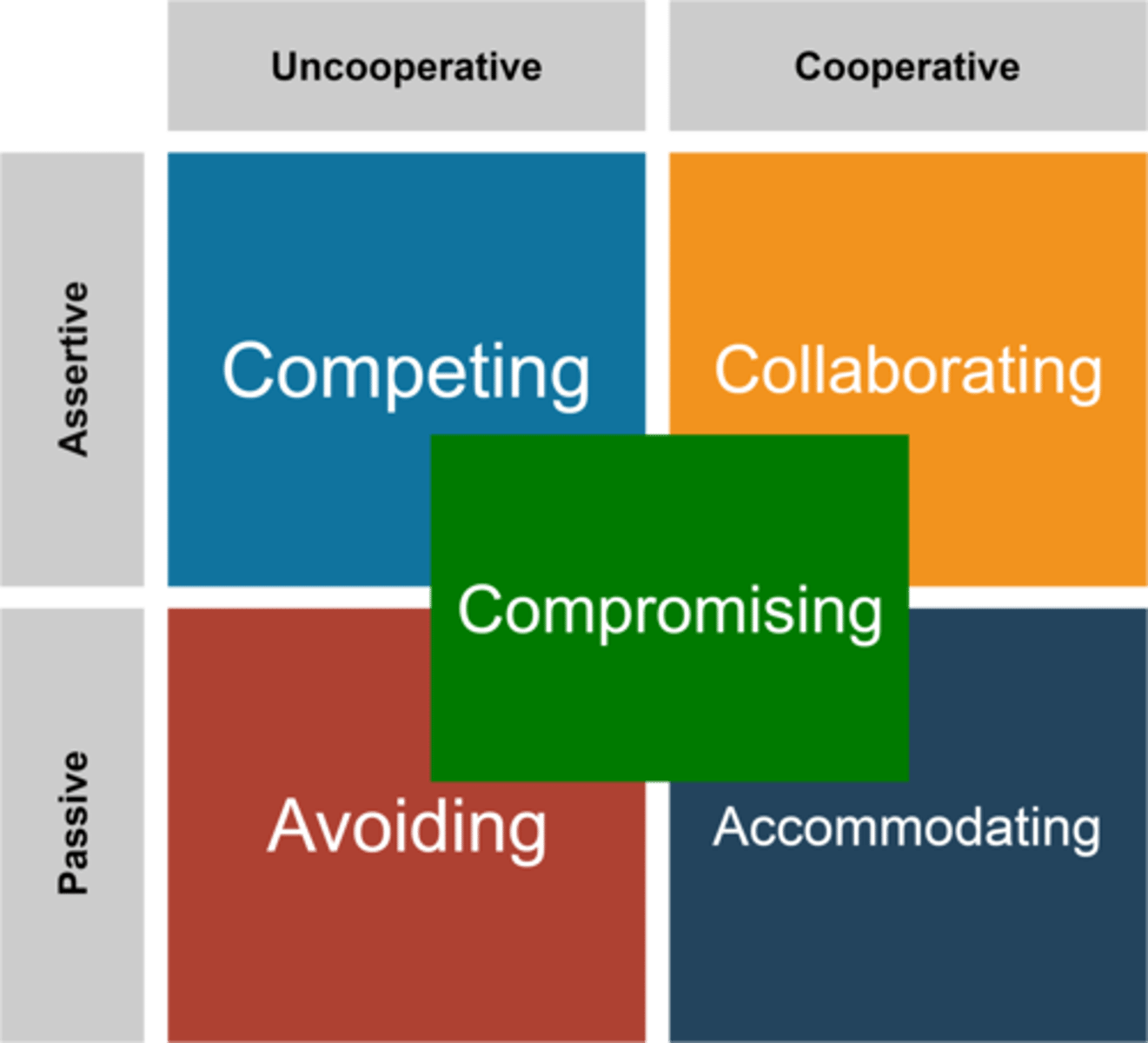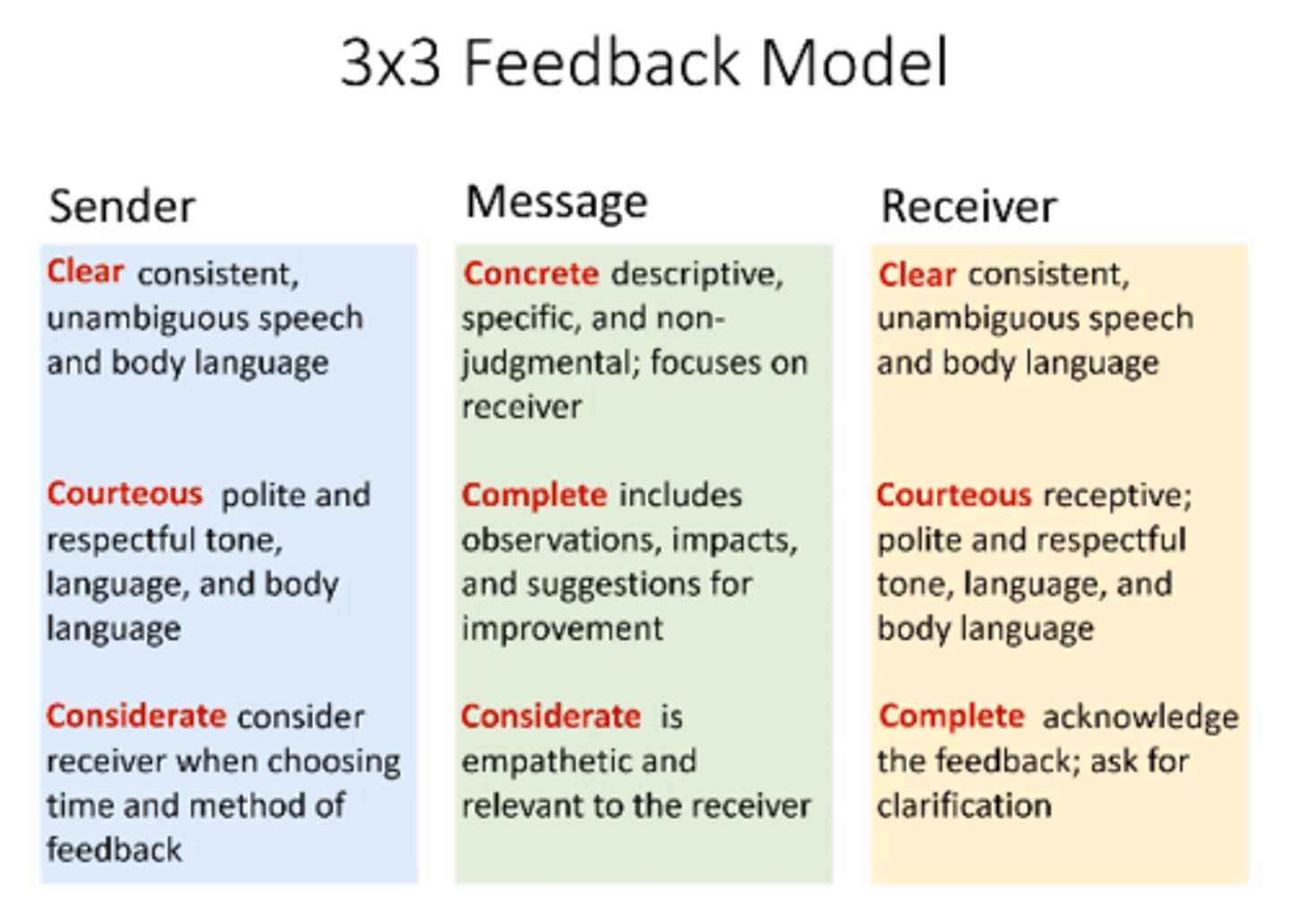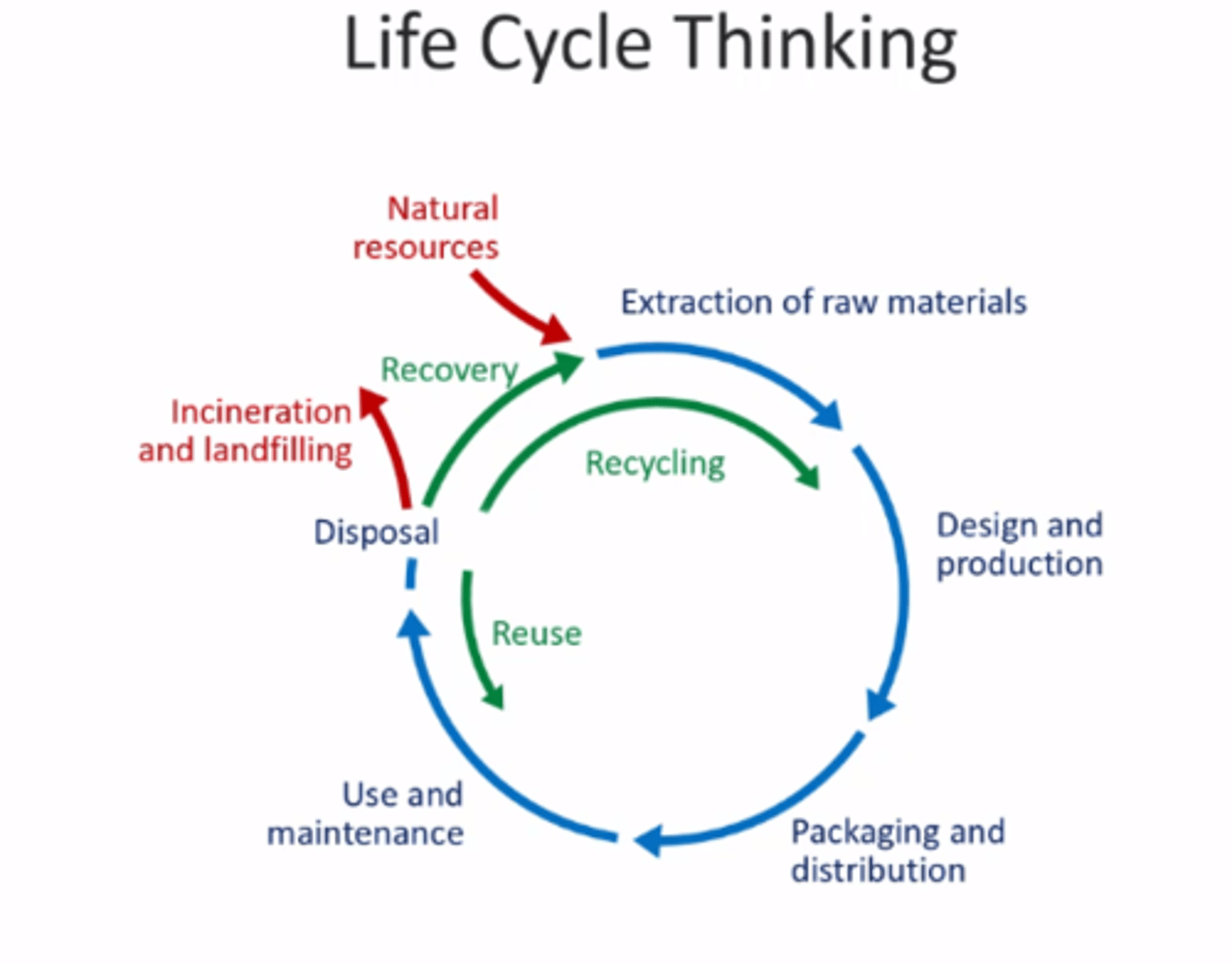APSC101 Final Exam Review
1/120
There's no tags or description
Looks like no tags are added yet.
Name | Mastery | Learn | Test | Matching | Spaced |
|---|
No study sessions yet.
121 Terms
Clear
Unambiguous
Easy to follow
(define jargon)
Complete
Includes all relevant info
Clearly conveys PURPOSE (based on audience; what they should do)
Concrete
Specific (contains all info; focuses on evidence; justification)
Clear in its main point (won't be misunderstood)
Overlaps with clear and complete
Making something more concrete will make it more clear and complete
Correct
Factually accurate
Grammar
Formatting
Concise
To the point
Good use of time
Corteous
Acting with GENERAL respect for the audience
1) Polite, friendly, respectful
2) Sincere and genuine
Please, thank you, etc.
Considerate
Takes SPECIFIC audience's perspective and needs into account
1) Empathetic, mindful, positive
2) Emphasis on what is possible
Spatial scale
SIZE
How large each option is
Temporal scale
TIME
Organizational scale
Organizational structures (such as government)
From local/municipal to international
Define stakeholder
Anyone who is influenced BY the project or CAN influence the project
What is the primary purpose of prototypes
reduce risk
When does a stakeholder have power
Has the ability to influence the project
- Decision-making authority
- Expertise
- Financial or resource contribution
When does a stakeholder have urgency
Has important or time-sensitive needs in the project
When does a stakeholder have legitimacy
Has a right to have a say in the project
- Directly impacted
- Legally entitled to give input
Bearable
environment
society
Viable
environment
economy
Equitable
economy
society
Define sustainability
meeting the needs of the present without compromising the ability of future generations to meet their own needs
the capacity of human society to continue indefinitely within the Earth's natural cycles
When must PPE be worn
At all times in studio with hand tools
Aviation Snips or Shears
- Two styles for cutting different sides
- Do NOT cut wires (needle nose pliers instead)
- Can make curved cuts (waves and circles)
Seamer
- Make clean bends (seams)
Nibbler
- Good to make slots
Hole Punch
- Easier to use holding it upside down
- If stuck, pull apart rapidly
Pop Riveter
- To hold 2 sheets together PERMANENTLY
- Make sure the mandrel (long pin of used pop rivet) is pulled out before using the tool again
Define risk
Risk = Severity x Likelihood
Controlled risk sources
Preventable: within ability to minimize and control
Strategic: taken for the possibility of greater reward
Uncontrolled risk sources
External Risks: outside of control, but still MUST be considered
Risk categories - Safety
Health and welfare of people and the environment
Risk categories - Technical
Design and manufacturing that prevent the device from working as intended
Risk categories - Project management
Completing project on time and on-budget
Risk categories - Operational
Decision-making and operation of the organization or device
Risk classification table
Horizontal: External, Preventable, Strategic
Vertical: Safety, Technical, Project Management, Operational
*cannot have strategic safety
Risk matrix
Vertical: Likelihood, Horizontal: Severity, with ratings starting at 1
Low risk response
Requires NO ACTION
Medium risk response
Might require MONITORING or SOME ACTION
High risk reponse
Must implement RISK REDUCTION MEASURES
Extreme risk response
UNACCEPTABLE; must be ADDRESSED IMMEDIATELY
Risk management strategies - Avoid
Change what you're doing to remove the risk entirely
Risk management strategies - Mitigate
Minimize the LIKELIHOOD or SEVERITY
Risk management strategies - Transfer
Pass risk to someone else (i.e. insurance)
Risk management strategies - Accept
For minor and strategic risks (not safety!)
Risk analysis - identify
Consider all possible risks in a classification table
Risk analysis - conduct
Examine SEVERITY and LIKELIHOOD of EACH risk using a risk matrix
Risk analysis - acceptable?
If YES: proceed to monitor and manage risk still
If NO: reduction?
Risk analysis - reducable?
If NO: discontinue
If YES: reduce the risk, and return to identify
Risk register
Record risks, their respective severities and likelihoods, rating, action taken and who's responsible for the risk
Risk
Possibility of harm, consequences or damage
Hazard
Capacity of equipment, material or processes to cause harm
Control hierarchy for safety hazards
1) PPE - Protect people from the hazard
2) Administrative Controls - Change how people work and behave around the hazard
3) Engineering Controls - Prevent people from being exposed to the hazard
4) Substitution - Replace hazard with something safer
5) Elimination - Remove hazard entirely
Team development stages
1) Forming
2) Storming
3) Norming
4) Performing
Conflict management strategies - avoiding
If stepping away will help DEESCALATE

Conflict management strategies - Acommodating
Issue not crucial to you; earns you goodwill
Conflict management strategies - Competing
Issue is critical to you (immediate action)
Conflict management strategies - Compromising
Time is short; balance team relationships and resolve issue
Conflict management strategies - Collaborating
Have time to tackle the issue in full; work towards finding the IDEAL SOLUTION for everyone
Isometric projection properties
View from one corner, horizontal axes rise at 30° and everything is equally spaced out
Orthographic projection properties
Views normal to the different faces
Doesn't show inside, back, bottom, or other end - use HIDDEN LINES (dashes) to combat this and circular feature identifies (long-short-long dashes = center lines)
Third angle projection
Imagine folding the 6 orthographic views from a 2D SHEET into a 3D BOX
Standard in North America
Symbol depicts a truncated cone
Engineering drawing title blocks (7)
- Drawing name
- Drawing number
- Revision number (or letter)
- Drawing scale
- Who drew it and who checked it
- Units and precision
- Type of projection
Engineering drawing dimensioning
Extension lines CAN cross (do not touch object)
Dimension lines CANNOT cross
- Do not place inside the object
- Place between views, if possible
- Arrows can go inwards or outwards
DO NOT show redundant dimensions
Dimension visible features than hidden features, if possible
Φ refers to DIAMETER
Types of feedback in the workplace
1) Appreciation - Acknowledge a job well done
2) Coaching - Help someone improve
3) Evaluation - Rate someone's performance against standards
3x3 feedback model
Sender Message Receiver
Clear Concrete Clear
Courteous Complete Courteous
Considerate Considerate Complete

Message (3x3 feedback)
Concrete - Objective, non-judgmental
Complete - Includes observable details (evidence), impacts, suggestions for improvement
Considerate - Empathetic, relevant, focus on what's possible
Sender (3x3 feedback)
Clear - Spoken language and body language should be easy to follow, consistent, unambiguous
Courteous - Tone, message and body language should remain polite and respectful
Considerate - Keep receiver in mind when choosing TIME and METHOD of feedback
Receiver (3x3 feedback)
Clear - Spoken language and body language should be easy to follow, consistent, unambiguous
Courteous - Tone, message and body language should remain polite and respectful
Complete - Acknowledge receiving the feedback, ask for clarification or suggestions (if appropriate)
Equity
Being fair and giving all people the same opportunity
Equality
Treating all people the same
Define diversity
Recognizing and valuing the unique background/ identity/ experiences/ points of views of different people, benefits team performance
Inclusion
Addressing inequities between diverse people to build a respectful and welcoming community
Where does bias come from
Lived experiences
- Media
- Culture and environment
- Family and peers
Implicit bias
Our own, subconscious attitudes and stereotypes that affect our understanding, actions and decisions
Stereotype threat
People can worry about inadvertently confirming the stereotype they think applies to them
Can increase anxiety and self-doubt (performance declines)
Microaggressions
Brief and commonplace statements and actions that seem small but communicate hostile, derogatory or negative slights to specific groups
Barriers to proceed from norming to performing
Bias, Microaggressions, Stereotype threat
Can be combatted reduce inequities and bias by welcoming diverse input, fostering trust and inclusion and practicing allyship
Allyship
Taking actions to support those who might otherwise feel excluded
Reactive allyship
Responding to defend someone when you observe unfair or unequal treatment
Proactive allyship
Engaging in actions on an ongoing basis to make underrepresented or otherwise marginalized individuals feel more included and respected
Characteristics of effective teams (5)
1) Dependability
2) Structure and clarity
3) Meaning
4) Impact
5) Psychological Safety
Challenges for small and remote communities to access clean water
- Difficult to supply chemicals and supplies
- Retaining skilled operators
- Source water quality is poorer
- Economies of scale
Smaller systems cost MORE PER VOLUME of treated water compared to larger systems
Advantages of centralized water system
Advantages
- Easier to maintain one large plant
- Easier to monitor
- Cost per volume is lower
Disadvantages of centralized water system
- A LOT of distribution infrastructure needed (piping) which is difficult and expensive to maintain
- Difficult to adjust the capacity of a growing megacity
Semi-decentralized water system
Greater number of smaller plants
Types of decentralized water systems
Point of entry system
- Treatment for each BUILDING
Point of use system
- Treatment for each BUSINESS or HOUSEHOLD
Assessing for sustainability
About adding POSITIVE CONTRIBUTIONS, not mitigating adverse effects
Goes beyond environmental assesment
Life cycle thinking chart
Considers product or process through ALL LIFE STAGES
Recovery refers to recovering raw material or energy
Reuse, recovery and recycling all lessen the demand on extracting natural resources and divert waste from incineration and landfilling.

Systems thinking
Considers how product or process interacts with other elements that together form a system
Sustainability is a property of a system
LCA vs SLCA
LCA
- Quantitative
- Rigorous and structured
- Involved and time-consuming
- Only available very late in the design process
SLCA
- Qualitative
- Simple, fast and inexpensive
- Suitable for use early in the design process
Reveals approx. 80% of environmental issues identified by a full LCA
Functional unit
quantified performance of a product system for use as a reference unit
ONLY CARE ABOUT PERFORMANCE METRIC!
Ignore everything else
Describe stages of an LCA
1) Goal definition and scope
- Outline SYSTEM BOUNDARY
2) Inventory analysis
- Tracking ALL material and energy flows in and out of the system boundary (detailed and time-consuming)
3) Impact assessment
- Look at impacts of EACH material and energy flow (through established environmental impact metrics)
4) Interpretation
- Distill impacts according to KEY life cycle stages or other areas of concern
- Use this info to IMPROVE design and ultimately REDUCE negative impacts
Describe SLCA matrix
Consider:
- Resources used
- Waste generated
- Energy used
- Public health
All of the above considered for EACH of:
- Raw materials
- Production
- Distribution
- Use
- End of life
Environmentally Responsible Product Rating
Shorthand: R_(ERP)
Sum of all ratings in the SLCA matrix
Higher is better
Can be used to:
- See areas of GREATEST NEGATIVE IMPACT and hence GREATEST POTENTIAL FOR IMPROVEMENT
- Compare different options in terms of performance (like a WDM)
Define appropriate technology
Design solution considers ALL KEY STAKEHOLDERS across ALL LIFE CYCLE STAGES for that solution
Solution is appropriate for the CONTEXT
Attributes of Appropriate Technology
1) Suitable for the SOCIAL and ECONOMIC CONTEXT of the region in which it is to be applied
2) ENVIRONMENTALLY SOUND (local natural resource use, waste and pollution)
3) Locally ACCEPTED and ADAPTED (locals involved in ADOPTION, IMPLEMENTATION and OPERATION
Considers SOCIAL, ECONOMIC and ENVIRONMENTAL constraints
Involving design FOR and design WITH the community
Build relationships and trust with the community
Engage --> Synthesize --> Learn
Involving community through ALL stages of the design process
Bottom-up approach
Resilient systems
Ability for a system to continue functioning when there is a change or disturbance
Complex systems tend to be more resilient than simple and complicated systems because complex systems have more interactions and feedback between the system elements
Simple and complicated systems are both deterministic (predictable)
"Simple, passive, and flexible" go together and are contrasted with "Complicated, active, and inflexible."
It is better if you do not need someone or something to constantly monitor and adjust the system
Imagine food cycle for comparison
Business letter layout
1" to 1 1/4" margins (default Word margins)
Block format (flush left; ragged right)
11-12 font size (use Times New Roman; avoid novelty fonts)
Blank line between each paragraph
NO INDENTING for paragraphs
Business letter elements
1) Sender's address
2) Date (written in full)
3) Inside (receiver's) address
- Title should be included with name
4) Salutation (ends with colon : NOT comma ,)
Body
5) Introduction and purpose
- Friendly greeting, outlines purpose
6) Details
- 1 or more paragraphs of supporting details
7) Concluding paragraph
- Restates purpose and requests some action
8) Closing (ends with comma ,)
- Sincerely, Thank you, Best regards,
- Leave a few blank lines for your signature
9) Name (in full) and title or credentials (if applicable)
Business letter example
100-2775 Fake Street
Vancouver, BC V1A 2B3
February 5, 2018
Ms. First Last, Director
Consulate General of Madeupistan
Suite 100-510 West Somewhere Street
Vancouver, BC V4C 5D6
Dear Ms. Last:
Introduction and purpose
Details
Concluding paragraph
Sincerely,
Pat Person, P.Eng.
Common variations to business letter elements
1) Letterhead
- Replaces Sender's Address
2) Receiver's address
- If title of person is long, list it below their name instead of next to their name
3) BOLDED Reference line starting with Re:
- Application #
- Order #
- Job posting code
4) Enclosure
In the body:
For your reference, I have enclosed a copy of my application and the invitation letter from the City of Someplace.
After the end of usual letter:
Enclosures:
1. Copy of original application
2. Invitation letter from the City of Someplace
5) Carbon copy or complimentary copy
At the end after enclosures (if applicable)
cc: Ms. First Last, Director
Impactful business letters
Use formal language (avoid contractions)
Emphasize the positive!
- Focus on what you CAN DO vs what you CANNOT
- Avoid negative words
- Place positive message prominently